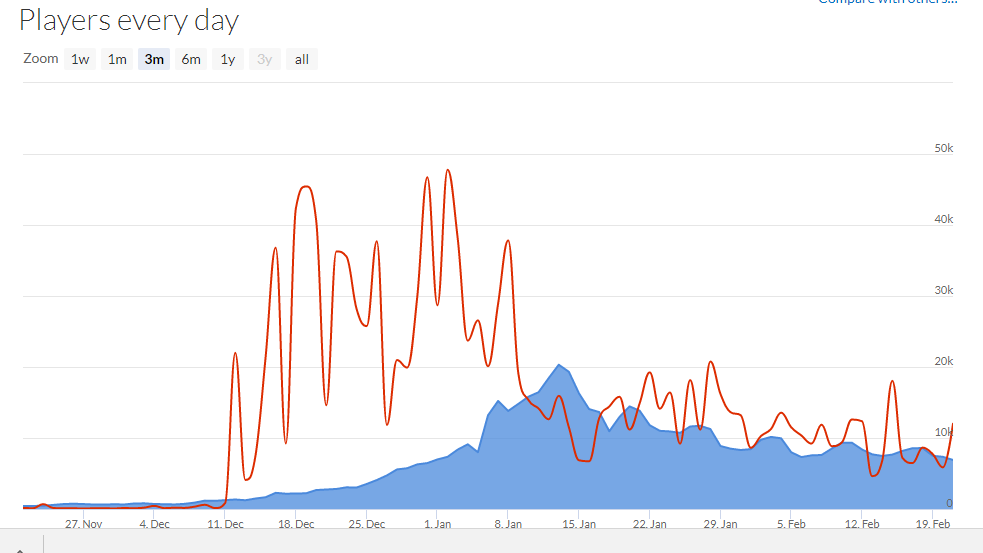VRChat, the social app for VR and non-VR users popularly known for its recent boom in meme-driven notoriety, seems to have leveled off somewhat in terms of install numbers and concurrent user rates following its exponential upswing back in December and January.
According to Steam Spy, downloads of the app are hovering somewhere around 3-3.4 million owners (not to be confused with users), although this month alone saw 400,000 installs, an encouraging thought as the more popular memes inevitably wane is relevancy.
The daily user rate however has cooled to around to ~8,000 daily concurrents on the busiest say of the week—a far cry from the ~20,000 players at it height of popularity in mid-January—but a much more consistent usership overall. You can check out the publicly available breakdown on Steam DB.

Since the app is only available through Steam, the figures seen above tell more or less the whole picture in terms of players per day. Take a look again at what the graph when the number of Twitch viewers is added (seen in red), one of the major sources of free publicity outside of YouTube.

Here we can see the bulk of Twitch views actually happened preceding the highest moment in daily users, bringing in the masses before cooling off to current viewership rates. And while raw downloads, daily concurrent user numbers, and Twitch views gives us a good idea of how VRChat is performing, it doesn’t specify the breakdown of what devices players are using, as VRChat supports both traditional monitors and VR headsets such as HTC Vive and Oculus Rift.
While those numbers aren’t public, as a free app open to anyone with a computer with even a half-decent GPU, it’s pretty much a forgone conclusion at this point that VRChat’s numbers are heavily influenced by desktop users. At the same time though, there isn’t really anything out there like it. As an app that provides a space for both VR and non-VR users to hang out and import their own wild (and sometimes horrible) avatars and worlds, it’s basically providing a free-for-all space of self expression—the perfect conditions for meme-ing (whether you like it or not). It’s also a space for conversations about VR, and a place to show off motion controls and realistic body language, possibly enticing desktop users to take the VR plunge too.
In any case, a large and healthy usership is something many VR apps can’t boast at these early days in the first consumer product cycle. And when a game creates a culture, people generally stick around to see what’s next.







